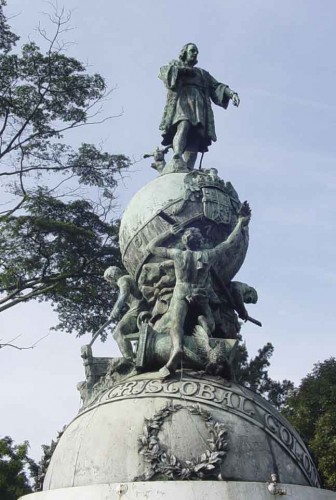Monument to Christopher Columbus
text and photo by C. Ibarra
In bygone days, Guatemala’s rulers presented distinctive landmarks to the capital city in praise of their own ideals: reform, modernism, development and patriotism. This has made the city an eclectic mixture of architectural styles and monuments.Among the most interesting and charismatic monuments in the city is the statue of Christopher Columbus. Its history is as interesting as the character that it represents. The turn of the 19th century, neo-classical statue of the celebrated and adventurous Genovese explorer was created to commemorate the 400th anniversary of his arrival in the Americas.
The bronze statue was commissioned to the Spanish sculptor Tomás Mur. The June 1896 festive inauguration ceremony was preceded by the then-first lady, Alegría de Reyna Barrios, wife of the famous reformist President Justo Rufino Barrios and was witnessed by the whole of Guatemalan society.
The Columbus statue, right hand on his chest and left hand pointing to the world at his feet, stands on a sphere. On the equator, the phrase: “Plus Ultra October 12th 1492” commemorates the celebrated (and for many, infamous) date. Holding the world are three vigorous figures representing science, constancy and valor, all which fueled the fearless Columbus to complete his historic journey.
In late 1917, the statue almost plummeted as it was battered by an earthquake, and his bronzed head took a nose dive onto the ground. The good citizens of the city came to its rescue, bringing mattresses and boards to keep the statue from completely falling down. The keen observer may notice the scar where the head was re-attached.
True to Columbus’ audacious character, the statue has traveled as much as Columbus himself. Originally placed on the western side of the city’s Central Plaza, it remained there until 1943, when it was moved to the Jocotenango Park, (Hipódromo del Norte zone 2). In 1965, it traveled once again to where it now rests in his own special plaza in Avenida las Américas. Today, with more than 100 years of residence in the nation’s capital, Columbus still stands overlooking the Américas plazas.
